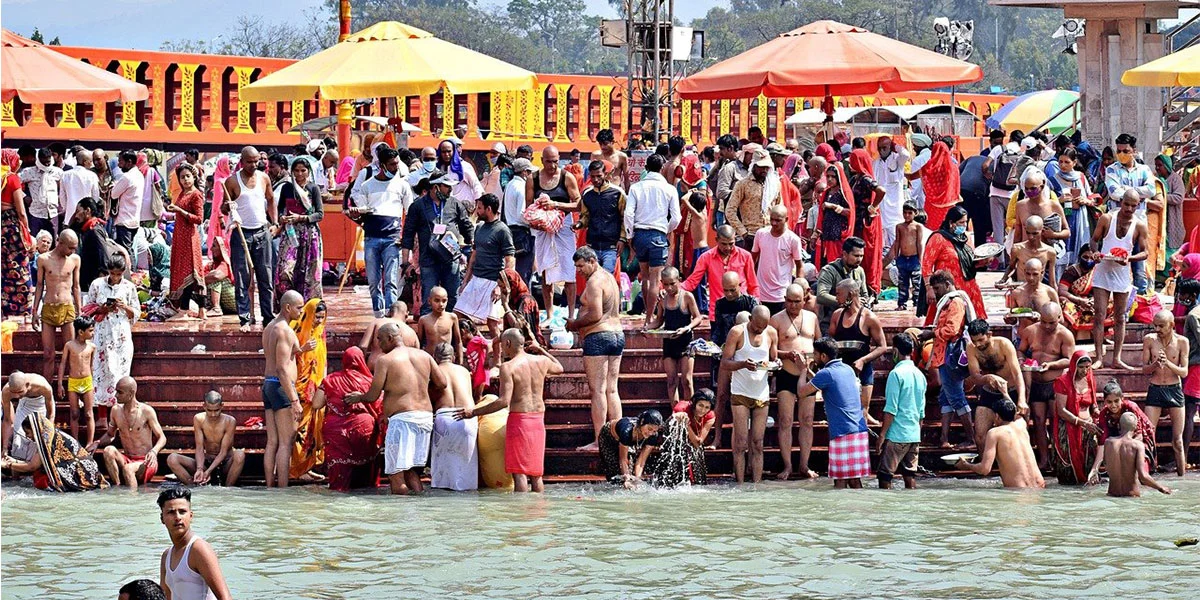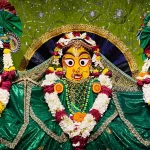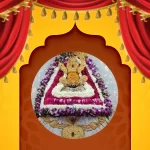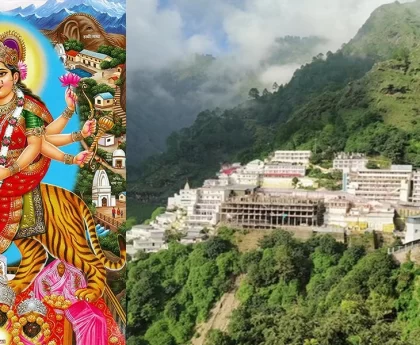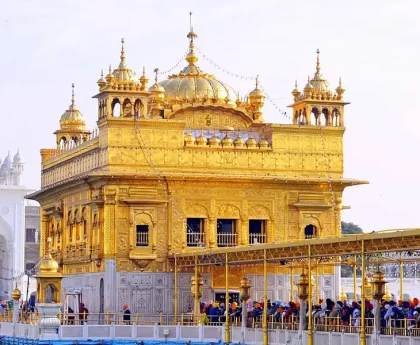Kumbh Mela is one of the largest religious gatherings in the world and is celebrated by Hindus in India. It is a mass pilgrimage where millions of devotees, sadhus (Hindu holy men), and tourists gather to take a holy dip in sacred rivers. The event is held at four different locations in India: Haridwar, Allahabad (Prayagraj), Nashik, and Ujjain. These locations are rotated every three years, which means each city hosts the Kumbh Mela once every twelve years.
The Kumbh Mela is based on the ancient Hindu tradition and mythology, which narrates the story of a celestial event when the gods and demons fought over a pitcher (kumbh) containing the nectar of immortality (amrita). The story goes that during the battle, a few drops of the nectar fell on four different locations, where the Kumbh Mela is now celebrated.
The main attraction of the Kumbh Mela is the ritual bathing in the sacred river at specific auspicious dates. Devotees believe that taking a dip during this time can cleanse them of their sins and bring them closer to salvation or moksha. The most significant bathing days, known as “Shahi Snan,” are considered the holiest and attract the largest crowds. These days are determined based on astrological positions, and millions of people come from various parts of India and the world to participate.
During the Kumbh Mela, various spiritual and cultural activities take place, including religious discourses, bhajans (devotional songs), and traditional performances. Sadhus and spiritual leaders from different sects and orders can also be seen meditating and sharing their wisdom with the attendees.
Kumbh Mela is not just a religious event; it also serves as an opportunity for traders, artisans, and businesses to showcase their products and services to a vast audience. The local and state authorities make significant efforts to ensure smooth management of the event, as the massive gathering requires careful planning for security, sanitation, and crowd control.
The Kumbh Mela is an essential cultural and spiritual event for Hindus and has gained international recognition due to its scale and religious significance. It provides a unique experience to participants and observers alike, showcasing the diversity and richness of India’s religious and cultural heritage.
History of Kumbh Mela
The history of the Kumbh Mela dates back thousands of years and is deeply rooted in Hindu mythology and traditions. The origins of the Kumbh Mela can be traced to ancient texts and legends, which have been passed down through generations. While the exact historical details are challenging to ascertain, the event has evolved over time and continues to be celebrated with great enthusiasm in the present day.
The Kumbh Mela is associated with the story of the Samudra Manthan (Churning of the Ocean) found in ancient Hindu scriptures, particularly the Puranas. According to this mythological tale, the gods (Devas) and demons (Asuras) decided to churn the ocean to obtain the elixir of immortality known as Amrita. The churning process was carried out using Mount Mandara as the churning rod and the serpent Vasuki as the rope. The gods held the tail end of the serpent, and the demons held its head, and together they churned the ocean for thousands of years.
During the churning, various divine objects and beings emerged from the ocean, including the goddess of wealth, Lakshmi, and the wish-fulfilling tree, Kalpavriksha. However, amidst the churn, a pot (Kumbh) containing the nectar of immortality, Amrita, appeared. The gods and demons both desired the nectar, leading to a fierce struggle to possess it.
During the intense battle, four drops of Amrita fell from the Kumbh at four different locations on Earth: Prayagraj (Allahabad), Haridwar, Nashik, and Ujjain. These four places are now the sites where the Kumbh Mela is celebrated in a cyclical manner.
The term “Kumbh” refers to the pot that contained the nectar, and “Mela” means a large gathering or fair. Hence, the Kumbh Mela is a grand festival commemorating the divine event of the churning of the ocean and the appearance of the Amrita.
The historical records of the Kumbh Mela can be found in various ancient texts and inscriptions. The Chinese traveler Xuanzang, who visited India during the 7th century, wrote about witnessing a large festival involving a river bath at Prayagraj (Allahabad). This suggests that the tradition of the Kumbh Mela has been observed for centuries.
Over time, the Kumbh Mela has grown in scale and significance. Today, it attracts millions of pilgrims and tourists from different parts of India and around the world. The event is not only a religious gathering but also a cultural spectacle, showcasing the diversity and vibrancy of Indian traditions, rituals, and beliefs. The Kumbh Mela continues to be a cherished and sacred event for Hindus, symbolizing unity, spirituality, and the pursuit of liberation or moksha.
Sacrality of Kumbh Mela
The Kumbh Mela is an incredibly sacred and significant religious event in Hinduism, known for its immense spiritual and cultural significance. It is the largest gathering of pilgrims on Earth and is held in four different locations in India: Haridwar, Allahabad (Prayagraj), Nashik, and Ujjain. The main Kumbh Mela, also known as the Maha Kumbh Mela, occurs every 12 years in each of these cities in a cyclical manner.
The sacrality of the Kumbh Mela can be understood from several perspectives:
- Historical and Mythological Significance: The Kumbh Mela has its roots in ancient Hindu scriptures and mythology. It is believed to have originated from the churning of the ocean (Samudra Manthan) in Hindu mythology, where gods and demons were trying to obtain the nectar of immortality (amrita). During the churning, drops of this elixir fell on the four locations where the Kumbh Mela is now celebrated, sanctifying them and making them holy pilgrimage sites.
- Spiritual Cleansing and Salvation: Attending the Kumbh Mela is considered an act of profound devotion and spiritual purification. It is believed that bathing in the sacred rivers during the Kumbh Mela, especially on specific auspicious dates, can cleanse one’s sins and lead to salvation (moksha) from the cycle of birth and death (samsara).
- Unity and Diversity: The Kumbh Mela is a testament to the diversity of Hinduism and brings together millions of devotees, sadhus (Hindu ascetics), saints, and spiritual seekers from various sects, regions, and walks of life. It serves as a unifying force, fostering a sense of unity among Hindus across the world.
- Gathering of Saints and Sages: The Kumbh Mela is a unique occasion where numerous revered saints, sages, and spiritual leaders gather to impart wisdom, give discourses, and share spiritual insights. It provides an unparalleled opportunity for seekers to meet and learn from these luminaries.
- Preservation of Traditions: The Kumbh Mela plays a vital role in preserving and promoting ancient Hindu traditions, rituals, and cultural practices. It showcases the richness of Hindu heritage and reinforces the continuity of age-old customs.
- Socio-cultural Importance: Apart from its religious significance, the Kumbh Mela also holds significant socio-cultural importance. It fosters a sense of social cohesion, encourages trade and commerce, and promotes tourism, making it an essential event for the local economy.
It is important to note that the Kumbh Mela’s sacrality is deeply rooted in Hindu beliefs, and it holds immense spiritual value for Hindus. However, it also attracts interest from people of various faiths and backgrounds, who visit to witness and experience the grandeur and diversity of this spectacular religious gathering.
Significance of Kumbh Mela
The Kumbh Mela holds immense significance for Hindus and is considered one of the most important and sacred festivals in their religious calendar.
Its significance can be understood from various angles:
- Spiritual Cleansing: The primary significance of the Kumbh Mela lies in the belief that taking a holy dip in the sacred rivers during the event can wash away one’s sins and purify the soul. Hindus believe that bathing in the sacred waters, especially on specific auspicious days like the Shahi Snan, can lead to spiritual cleansing and liberation from the cycle of birth and death (moksha).
- Religious Gathering: The Kumbh Mela serves as a massive religious gathering, bringing together millions of devotees, sadhus (ascetics), and spiritual leaders from various Hindu sects and traditions. It provides a unique opportunity for people to come together, share their beliefs, and deepen their spiritual practices.
- Historical and Mythological Importance: The Kumbh Mela is rooted in ancient Hindu mythology and the legend of the Samudra Manthan, making it a celebration of India’s rich cultural heritage and religious traditions. The event commemorates the divine struggle between the gods and demons and the appearance of the nectar of immortality.
- Cultural Diversity: The Kumbh Mela showcases the diversity of Hindu culture, rituals, and practices. It is a vibrant display of different sects, orders, and spiritual traditions coexisting harmoniously. The presence of various sadhus and spiritual leaders in their distinct attires and practices adds to the cultural richness of the event.
- Social Harmony: The Kumbh Mela serves as a unifying force, bringing people from various backgrounds, castes, and regions together. It promotes a sense of social harmony and fosters a feeling of unity among the diverse crowd, emphasizing the idea of “Vasudhaiva Kutumbakam” (the world is one family).
- Economic Impact: The Kumbh Mela has a significant economic impact on the host cities and surrounding areas. The influx of millions of pilgrims and tourists leads to increased economic activities, including tourism, trade, and commerce. It provides an opportunity for businesses and artisans to showcase and sell their products.
- Symbol of Faith and Devotion: Participating in the Kumbh Mela is an act of devotion and faith for millions of Hindus. Many people undertake arduous journeys, often traveling long distances and enduring hardships, to be a part of this sacred gathering. It reflects the deep-rooted spiritual connection that Hindus have with their religious beliefs.
- UNESCO Intangible Cultural Heritage: In 2017, UNESCO inscribed the “Kumbh Mela” on its list of intangible cultural heritage of humanity. This recognition highlights the cultural and religious significance of the festival on a global level.
In summary, the Kumbh Mela holds multiple dimensions of significance, encompassing spirituality, history, culture, and social aspects. It remains a deeply revered and cherished festival for Hindus, attracting millions of participants who seek spiritual upliftment and a sense of unity with the divine and fellow devotees.
How To Reach Kumbh Mela
Reaching the Kumbh Mela requires careful planning and consideration, as it is a massive event attended by millions of people. The location of the Kumbh Mela changes every year among the four cities – Haridwar, Prayagraj (Allahabad), Nashik, and Ujjain. Here are some general guidelines on how to reach the Kumbh Mela:
- Plan in Advance:Kumbh Mela dates are usually announced well in advance. It’s essential to plan your travel early, as accommodations and transportation options get booked quickly due to the high influx of pilgrims.
- Choose the Nearest City:First, determine which city the Kumbh Mela is being held in during the year you plan to attend. The main Kumbh Mela (Maha Kumbh Mela) takes place every 12 years, while the Ardh Kumbh Mela occurs every six years. The exact dates and locations are announced by the respective city authorities and religious organizations.
- By Air:The nearest airports to the Kumbh Mela locations are:
- – Haridwar: Jolly Grant Airport in Dehradun
– Prayagraj (Allahabad): Allahabad Airport or Bamrauli Airport
– Nashik: Ozar Airport or Gandhinagar Airport
– Ujjain: Devi Ahilya Bai Holkar Airport in Indore - By Train:All the Kumbh Mela cities are well-connected by trains. You can check the train schedule and book your tickets in advance. Major railway stations near the Kumbh Mela locations are:
- – Haridwar: Haridwar Junction
– Prayagraj (Allahabad): Prayagraj Junction or Allahabad Junction
– Nashik: Nashik Road Railway Station
– Ujjain: Ujjain Junction - By Road:You can also reach the Kumbh Mela cities by road through various state highways and national highways. Private and public bus services are available from nearby cities and towns.
- Local Transportation:Once you reach the Kumbh Mela city, be prepared for large crowds and limited vehicle access near the festival grounds. It’s best to use public transportation like buses, auto-rickshaws, or cycle rickshaws to move around.
- Accommodations:During the Kumbh Mela, temporary accommodation options like tents and temporary shelters are set up to accommodate the massive number of pilgrims. You can also book hotels or guesthouses in advance if available.
- Safety and Health:Given the huge gathering, it’s essential to take care of your belongings and be vigilant. Stay hydrated, carry necessary medications, and follow health and safety guidelines.
Always check the official Kumbh Mela website or contact local authorities for the most up-to-date information, dates, and travel guidelines. Being well-prepared will help you have a meaningful and memorable experience at the Kumbh Mela.
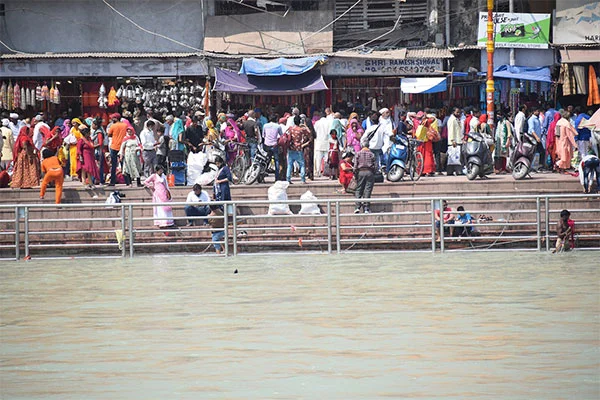
कुंभ मेला
कुंभ मेला भारत में हिंदू धर्म के अनुयायियों द्वारा मनाया जाने वाला एक बड़ा धार्मिक मेला है। यह एक लाखों भक्तों, साधुओं (हिंदू संतों), और पर्यटकों का संगठन है, जो पवित्र नदियों में शुद्धिकरण के लिए संगठित होते हैं। इस आयोजन को भारत के चार विभिन्न स्थानों पर हरिद्वार, अल्लाहाबाद (प्रयागराज), नासिक, और उज्जैन में किया जाता है। ये स्थान तीन-तीन वर्षों के अंतराल पर बदलते रहते हैं, जिससे प्रत्येक शहर लगभग बारह सालों के अंतराल में एक-एक बार कुंभ मेला का आयोजन करता है।
कुंभ मेला प्राचीन हिंदू परंपरा और पौराणिक कथाओं से जुड़ा हुआ है, जिसमें इसे संबोधित करने वाले कई पुराणिक कथाएं हैं। इसमें सबसे प्रमुख कथा समुद्र मंथन से संबंधित है, जिसमें देवता और राक्षसों ने अमृत (अमरत्व का रस) प्राप्त करने के लिए समुद्र का मंथन किया था। मंथन के दौरान भगवान धन्वंतरि अमृत के साथ अवतीर्ण हुए थे और देवता ने उनसे अमृत प्राप्त किया। राक्षस उन्हें रोकने के लिए विष कलशों को चुराने के लिए भगवान विष्णु ने मोहिनी रूप धारण किया और अमृत कलशों को विष राक्षसों से बचाया। इस दौरान चारों ओर गिरते अमृत के कुंभ के चार बूँदें भूमि पर गिरीं। इन चार बूँदों को बचाने के लिए कुंभ मेला का आयोजन होता है और इस आयोजन का नाम कुंभ मेला पड़ा।
कुंभ मेला के पांच स्नानों के दिन विशेष महत्व है, जिन्हें “शाही स्नान” कहा जाता है। ये स्नान तिथियां ज्योतिषीय स्थितियों के आधार पर तय की जाती हैं और इन दिनों पर लाखों लोग अपने पापों को धोने और मोक्ष के पास पहुंचने के लिए नदी में नहाते हैं। यह अद्भुत दृश्य देखने के लिए देश भर से लाखों लोग इन शाही स्नानों को देखने के लिए उत्साहित होते हैं।
कुंभ मेला को सिर्फ एक धार्मिक आयोजन के रूप में नहीं, बल्कि भारतीय सभ्यता, रीति-रिवाज, और सांस्कृतिक विरासत का प्रती
क भी माना जाता है। इस अद्भुत मेले के माध्यम से हिंदू धर्म की विविधता और समृद्धि को प्रदर्शित किया जाता है और लाखों लोगों को संस्कृति और धरोहर का अनुभव करने का मौका मिलता है।
कुंभ मेला कब और कहां मनाया जाता है
कुंभ मेला कब और कहां मनाया जाता है, इसका आयोजन चार पवित्र नदियों के बैंकों पर बदलते हैं।
कुंभ मेला को चार विभिन्न स्थानों पर निम्नलिखित तिथियों पर आयोजित किया जाता है:
- प्रयागराज (अल्लाहाबाद) – इस स्थान पर कुंभ मेला प्रत्येक 12 वर्ष के अंतराल पर होता है। यहां आयोजित कुंभ मेला में गंगा, यमुना और सरस्वती नदियों का संगम होता है, जिसे त्रिवेणी संगम कहा जाता है। 2019 में, अपराजिता शनि कुंभ मेला का आयोजन प्रयागराज में किया गया था।
- हरिद्वार – हरिद्वार में भी कुंभ मेला प्रत्येक 12 वर्षों के अंतराल पर होता है। यहां आयोजित कुंभ मेला में गंगा नदी के तट पर शाही स्नान होता है।
- नासिक – नासिक में कुंभ मेला प्रत्येक 12 वर्षों के अंतराल पर होता है। यहां कुंभ मेला में गोदावरी नदी के किनारे शाही स्नान होता है।
- उज्जैन – उज्जैन में भी कुंभ मेला प्रत्येक 12 वर्षों के अंतराल पर होता है। यहां कुंभ मेला में शिप्रा नदी के तट पर शाही स्नान होता है।
कुंभ मेला का आयोजन विशेष शुभ मुहूर्त पर होता है, जिसे ज्योतिषीय गणित के अनुसार निर्धारित किया जाता है। ये नदियां और स्थान बदलते रहते हैं और इस तरीके से प्रत्येक शहर लगभग बारह सालों के अंतराल में एक-एक बार कुंभ मेला का आयोजन करता है। इसमें कोई निश्चित समयांतराल नहीं होता है और आयोजन का तारीख और स्थान ज्योतिषीय पंचांग के अनुसार निर्धारित किया जाता है।
कुम्भ मेले की पवित्रता
कुम्भ मेले की पवित्रता हिंदू धर्म के लिए विशेष महत्वपूर्ण है और इसे सांस्कृतिक और धार्मिक दृष्टिकोन से महत्वपूर्ण माना जाता है। कुम्भ मेले की पवित्रता के कुछ मुख्य अंश निम्नलिखित हैं:
- मानव के पावनीकरण और मुक्ति: कुम्भ मेले के श्रद्धालु लोग श्रेष्ठता और आत्मा के शुद्धिकरण के लिए इसमें भाग लेते हैं। कुम्भ मेले के गंगा, यमुना, सरस्वती, और गोदावरी जैसे पवित्र नदियों में स्नान करने के लिए आनंदित भक्त अपने पापों का शुद्धिकरण करते हैं और संसार चक्र से मुक्ति को प्राप्त करने की कामना करते हैं।
- धार्मिक और इतिहासिक महत्व: कुम्भ मेले का इतिहास हिंदू पुराणों और धर्मग्रंथों में मिलता है। इसे समुद्र मंथन से जुड़ा माना जाता है, जिसमें अमृत के बिना जीवन के नहीं रहने वाला विष्णुवंत जल्दी से समुद्र भित्ति कर गया था। उस समय अमृत के कुछ द्रव्य किए जा रहे थे जिनसे इन चार नगरों में एक समय के लिए अशान्ति रहने लगी थी और इस समय में कुम्भ मेले का आयोजन होता है।
- एकता और धरोहर: कुम्भ मेले विभिन्न संप्रदायों, धर्मों और भाषाओं से आए हुए लाखों श्रद्धालुओं को एकता के साथ जोड़ता है। इसमें एक साथ आने से मनोवैज्ञानिक, सांस्कृतिक, और सामाजिक समृद्धि की भी एक संकेत मिलता है। यह धार्मिक अवसर भारतीय समाज के लिए एक समाजिक समूह गतिविधियों का महत्वपूर्ण साधन भी बनता है।
- तार्किक और भौतिक महत्व: कुम्भ मेले के स्थानों पर आए जोगी, साधु, संत, और धार्मिक गुरुओं के समय समय पर विचार-विमर्श भी होते हैं जिनसे श्रद्धालु विज्ञान और तार्किक प्रश्नों का समाधान प्राप्त कर सकते हैं।
- भारतीय राष्ट्रीय एकता: कुम्भ मेले को भारतीय संस्कृति और राष्ट्रीय एकता की एक जीवंत प्रतीका माना जाता है। यह देश भर से लोगों को एक स्थान पर आकर भारतीयता और धरोहर का अनुभव करने का अवसर प्रदान करता है।
कुंभ मेले तक कैसे पहुंचे
कुंभ मेले तक पहुंचने के लिए यहां पूर्व योजना और विचारधारा आवश्यक होती है, क्योंकि यह एक विशाल आयोजन है जिसमें लाखों लोग शामिल होते हैं। आप निम्नलिखित निर्देशों का पालन करके कुंभ मेले तक पहुंच सकते हैं:
- अग्रिम योजना: कुंभ मेले की तारीखों को आमंत्रित कराया जाता है जो पहले से ही घोषित होती हैं। आपको अपनी यात्रा की योजना समय से पहले करनी चाहिए, क्योंकि पर्वतराज, उत्तर प्रदेश सरकार और धार्मिक संगठन द्वारा यातायात और आवास की व्यवस्था के कारण लाखों लोग इसके लिए आवेदन कर सकते हैं।
- नजदीकी शहर का चयन: सबसे पहले, जानें कि आप कुंभ मेले के किस शहर में जाना चाहते हैं। कुंभ मेला चार शहरों – हरिद्वार, प्रयागराज (इलाहाबाद), नासिक, और उज्जैन में बदलता रहता है। मुख्य कुंभ मेला (महा कुंभ मेला) हर 12 वर्ष में होता है, जबकि अर्ध कुंभ मेला हर छह वर्ष में होता है। सटीक तारीखें और स्थान संबंधित शहरी अधिकारियों और धार्मिक संगठनों द्वारा घोषित की जाती हैं।
- वायुयान से: कुंभ मेले स्थानों तक नजदीकी हवाई अड्डे का चयन करें।
- – हरिद्वार: देहरादून में जॉली ग्रांट हवाई अड्डा
– प्रयागराज (इलाहाबाद): इलाहाबाद जंक्शन या बमरौली हवाई अड्डा
– नासिक: ओझर या गांधीनगर हवाई अड्डा
– उज्जैन: इंदौर में देवी अहिल्या बाई होलकर हवाई अड्डा - रेल से: सभी कुंभ मेले स्थान रेल से अच्छे से जुड़े होते हैं। आप रेलगाड़ी की यात्रा का अनुसरण करके अपना टिकट विवरण देख सकते हैं।
- – हरिद्वार: हरिद्वार जंक्शन
– प्रयागराज (इलाहाबाद): प्रयागराज जंक्शन या इलाहाबाद जंक्शन
– नासिक: नासिक रोड रेलवे स्टेशन
– उज्जैन: उज्जैन जंक्शन - सड़क से: आप विभिन्न राज्य मार्गों और राष्ट्रीय मार्गों के माध्यम से भी कुंभ मेले स्थानों तक सड़क द्वारा पहुंच सकते हैं। नजदीकी शहरों और गांवों से बस सेवाए
If you don’t like this article/post please share your feedback.

